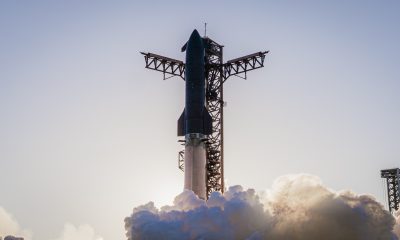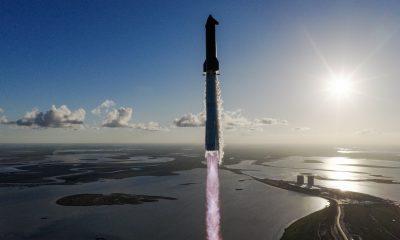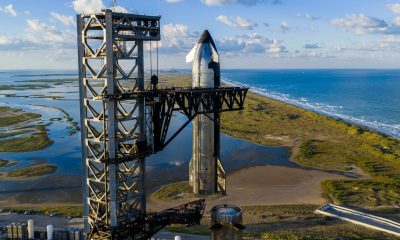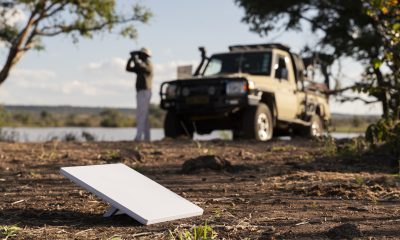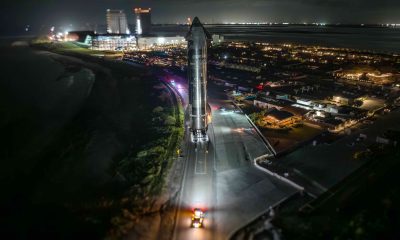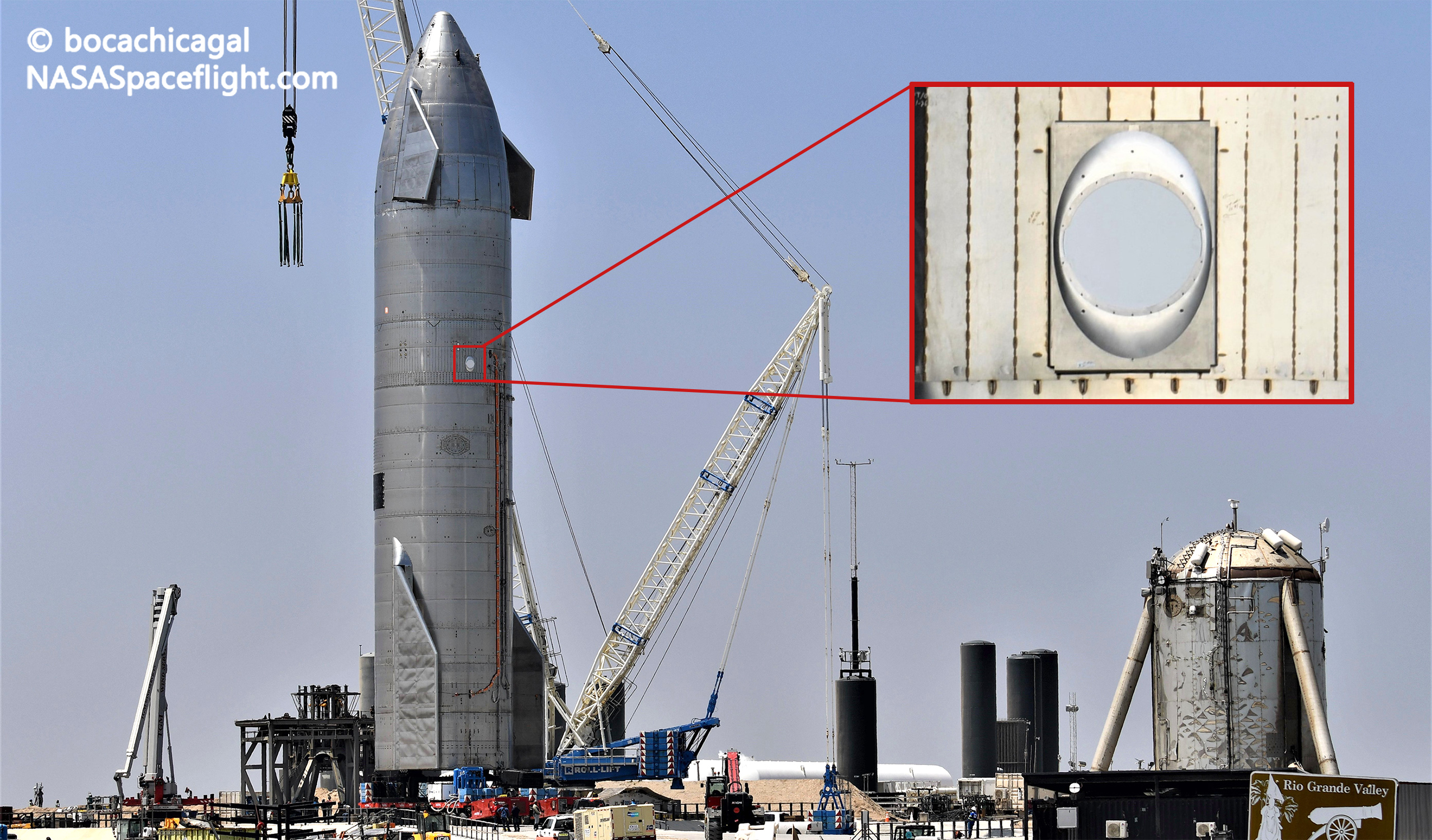
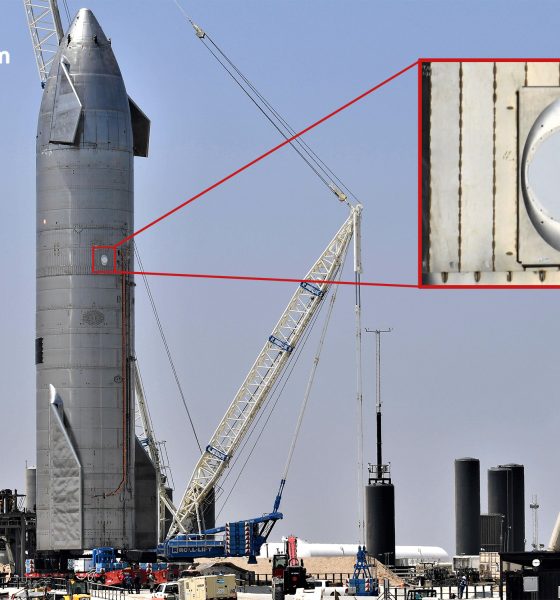
News
SpaceX installs Starlink dish on upgraded Starship prototype
In the latest in a long line of twists, SpaceX has requested permission from the FCC to operate a Starlink internet antenna installed on Starship serial number 15 (SN15).
The first in a planned batch of four or more upgraded Starship prototypes, SN15 was rolled a mile down the road from SpaceX’s South Texas factory to its suborbital launch pad late last week. Around the same time that its aft tank section was being prepped for nose installation on April 3rd, some of the first 360-degree views of the rocket revealed an unusual porthole-esque addition just above the Starship’s forward tank dome. As far back as Starhopper in 2019, Starships have used that space between tank and nosecone as an installation point for avionics, Tesla batteries, and a number of radio and GPS antennas, among other things.
The new hardware generally fell under the radar but most that took note assumed it was some kind of antenna upgrade. As it turns out, that speculation was almost certainly correct – but not in the way most expected.
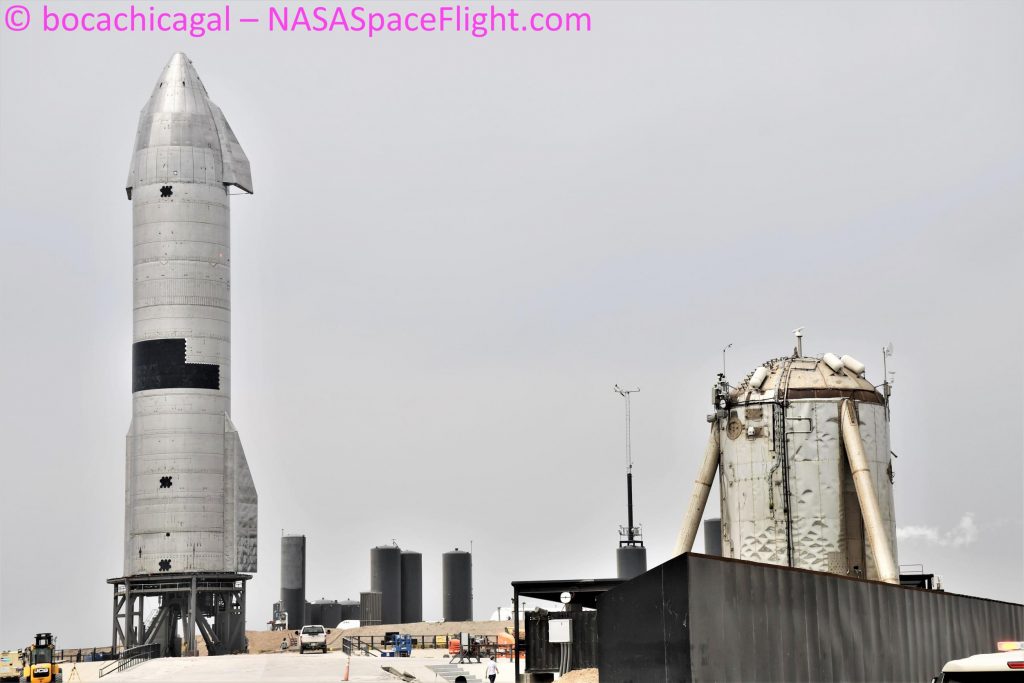
When SN15’s new antenna first appeared, the author speculated that it bore a striking resemblance to a SpaceX Starlink dish. However, another forum user argued that it was more likely an upgraded S-band antenna akin to those used on SpaceX’s Falcon rockets. The author later noted that the S-band antenna pass-through located on the interstage of Falcon boosters was almost the same size as the new antenna and shroud visible on Starship SN15, seemingly closing the case.
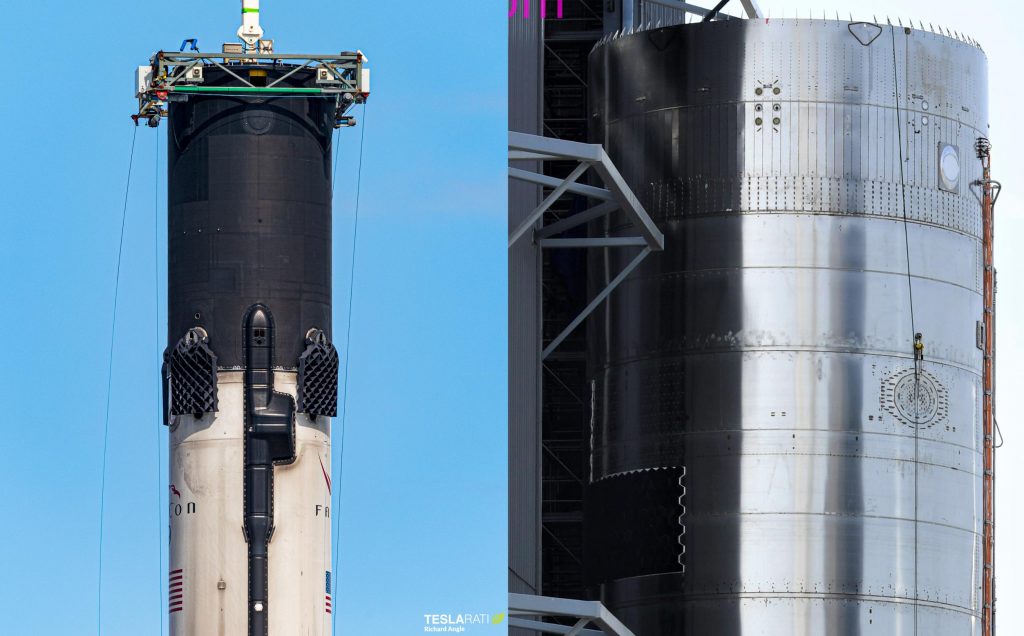
Nine days later, SpaceX asked the FCC for permission to operate a Starlink dish (user terminal) in Boca Chica “at altitudes not to exceed 12.5 km” during operations “on the ground or during test flights.” In other words, the antenna installed on Starship SN15 is almost certainly a Starlink dish. Surrounded by an aerodynamic shroud, the antenna is firmly fixed on the rocket and would rely entirely upon cutting-edge phased array beamforming to electronically ‘steer’ itself to both transmit and receive from one or more of almost a thousand operational Starlink satellites currently in orbit.
In SpaceX’s FCC Special Temporary Authority (STA) request, the company curiously asked for the 60-day test period to begin on April 20th. Even if the FCC moves extremely quickly and grants the STA within a few days to a week of SpaceX’s April 9th request, it’s unlikely that the company would delay Starship SN15 test or launch plans by almost ten days to wait for permission to use the rocket’s new Starlink antenna. In other words, while SN15 is the first Starship to have a Starlink antenna installed, there’s a decent chance it won’t be the first to actually put that capability to the test – both on the ground or during a launch.
While unlikely, the fact that SpaceX’s Starship SN15 Starlink antenna installation is almost the same size as Falcon 9’s reliable but far more basic S-band setup also begs the question of whether success on Starship test flights could eventually lead to the addition of Starlink dishes on future Falcon boosters. Regardless, Starship SN15 is on track to kick off a busy week of qualification testing in South Texas. If the rocket suffers any significant delays, as has admittedly been the norm for Starship prototypes, there’s a good chance SN15 could begin testing its Starlink dish around the middle of next week.
Elon Musk
Tesla CEO Elon Musk’s $1 trillion pay package hits first adversity from proxy firm
ISS said the size of the pay package will enable Musk to have access to “extraordinarily high pay opportunities over the next ten years,” and it will have an impact on future packages because it will “reduce the board’s ability to meaningfully adjust future pay levels.”
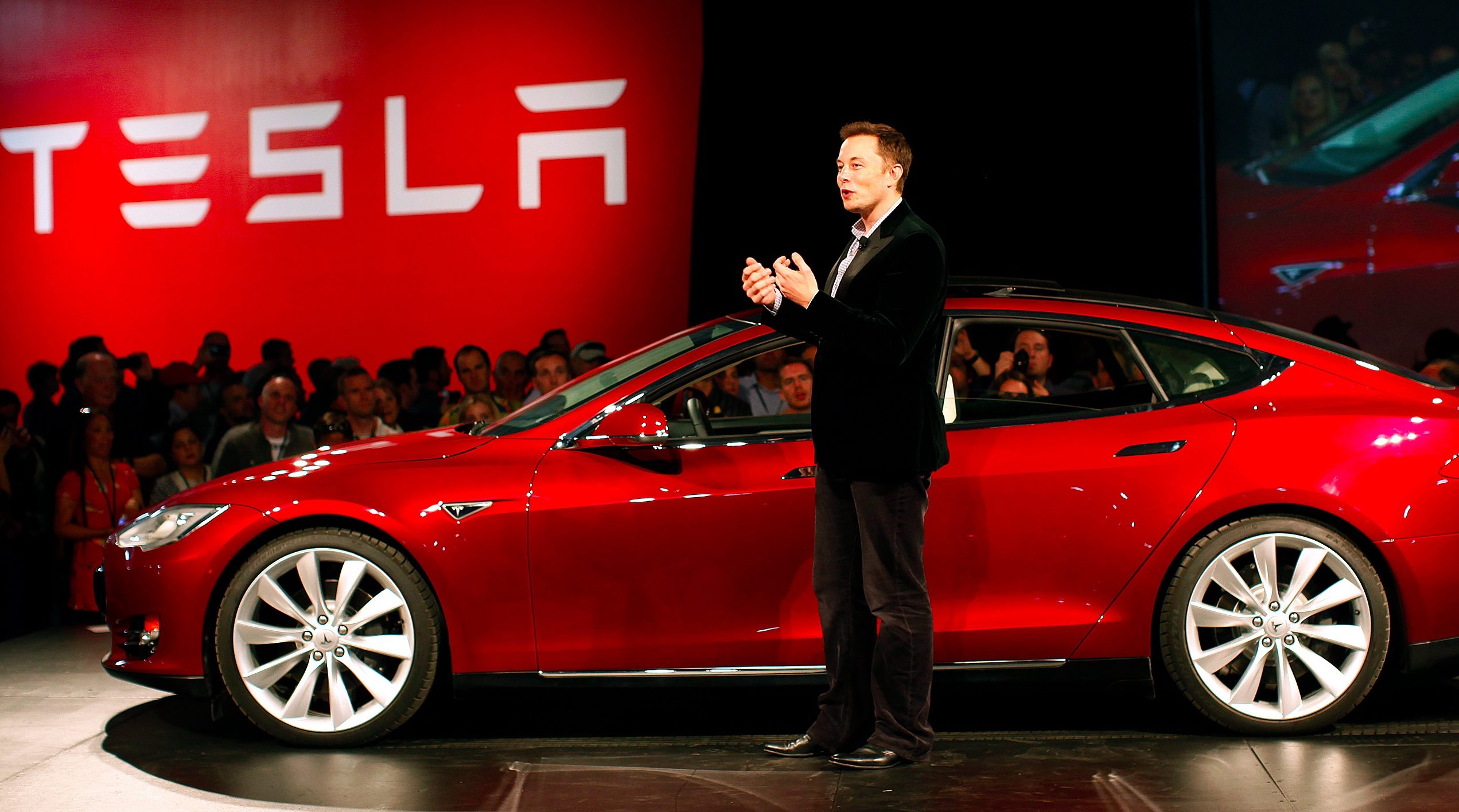
Tesla CEO Elon Musk’s $1 trillion pay package, which was proposed by the company last month, has hit its first bit of adversity from proxy advisory firm Institutional Shareholder Services (ISS).
Musk has called the firm “ISIS,” a play on its name relating it to the terrorist organization, in the past.
“ISIS”
— Elon Musk (@elonmusk) September 27, 2021
The pay package aims to lock in Musk to the CEO role at Tesla for the next decade, as it will only be paid in full if he is able to unlock each tranche based on company growth, which will reward shareholders.
However, the sum is incredibly large and would give Musk the ability to become the first trillionaire in history, based on his holdings. This is precisely why ISS is advising shareholders to vote against the pay plan.
The group said that Musk’s pay package will lock him in, which is the goal of the Board, and it is especially important to do this because of his “track record and vision.”
However, it also said the size of the pay package will enable Musk to have access to “extraordinarily high pay opportunities over the next ten years,” and it will have an impact on future packages because it will “reduce the board’s ability to meaningfully adjust future pay levels.”
The release from ISS called the size of Musk’s pay package “astronomical” and said its design could continue to pay the CEO massive amounts of money for even partially achieving the goals. This could end up in potential dilution for existing investors.
If Musk were to reach all of the tranches, Tesla’s market cap could reach up to $8.5 trillion, which would make it the most valuable company in the world.
Tesla has made its own attempts to woo shareholders into voting for the pay package, which it feels is crucial not only for retaining Musk but also for continuing to create value for shareholders.
Tesla launched an ad for Elon Musk’s pay package on Paramount+
Musk has also said he would like to have more ownership control of Tesla, so he would not have as much of an issue with who he calls “activist shareholders.”
News
Tesla is adding an interesting feature to its centerscreen in a coming update
In a recent dissection of coding, Tesla hacker green noticed that the company is bringing in screenshare with Software Update 2025.38

Tesla is adding an interesting feature to its center touchscreen in a coming update, according to a noted hacker.
In a recent dissection of coding, Tesla hacker green noticed that the company is bringing in screenshare with Software Update 2025.38. Details on the use case are slim, but he said the feature would export the car screen so it could be viewed remotely.
It would bring up a notification on the screen, along with a four-digit pin that would link the two together:
hm, have not noticed at first, but 2025.38 also brings in a “screenshare” service to export the car screen so you can view it remotely (details are unclear yet).
When you do it there’s going to be a notification on the screen. Secured by a super-duper static 4-digits pin…— green (@greentheonly) October 17, 2025
As previously mentioned, the use case is unclear, but there are some ideas. One of which is for remote support, which is something Apple has used to help resolve issues with its products.
Support staff and employees routinely tap into customers’ screens to help resolve issues, so this could be a way Tesla could also use it.
This seems especially relevant with Robotaxi, as the screen might be a crucial part of resolving customer complaints when there is no employee in the car.
Additionally, it seems as if it will not be exclusive to those owners who have newer vehicles that utilize the AMD chip. Intel will get support with the new feature as well, according to what green has noticed in the coding.
Finally, it could also be used with all sorts of content creation, especially as Full Self-Driving videos and what the vehicle sees in Driver Visualization.
As it is released, Tesla will likely release more information regarding what the screensharing mode will be used for.
For right now, many owners are wondering where it could actually work and what advantages it will offer for owners as well as the company itself.
Elon Musk
SpaceX posts Starship booster feat that’s so nutty, it doesn’t even look real
The Super Heavy booster’s feat was so impressive that the whole maneuver almost looked like it was AI-generated.
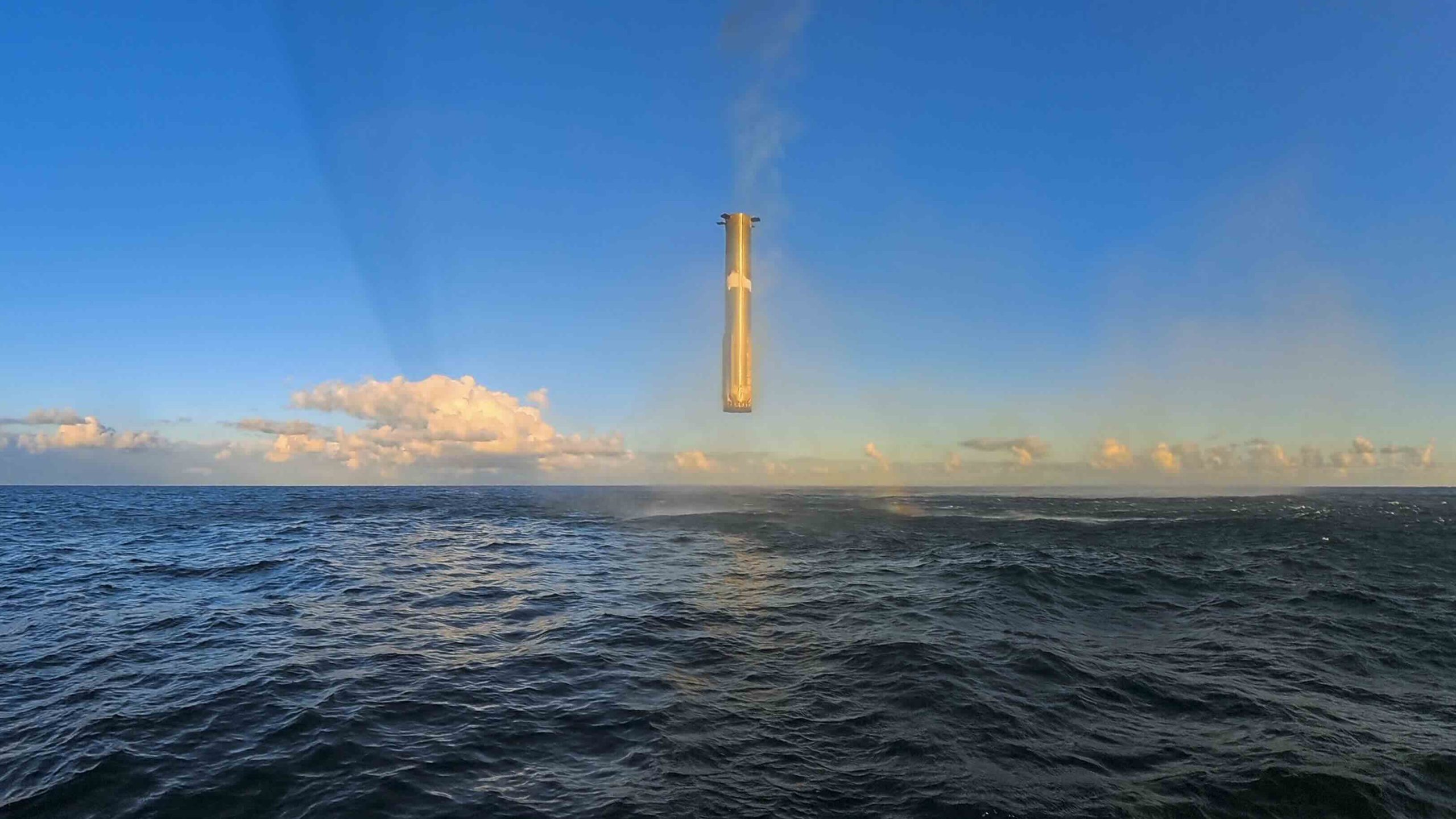
SpaceX has shared a video of a remarkable feat achieved by Starship’s Super Heavy booster during its 11th flight test.
The Super Heavy booster’s feat was so impressive that the whole maneuver, which was captured on video, almost looked like it was AI-generated.
Super Heavy’s picture perfect hover
As could be seen in the video shared by SpaceX, Starship’s Super Heavy booster, which is nearly 400 feet tall, smoothly returned to Earth and hovered above the Gulf of America for a few seconds before it went for its soft water landing. The booster’s picture-perfect maneuver before splashing down all but capped a near-flawless mission for Starship, which is about to enter its V3 era with Flight 12.
The booster’s balance and stability were so perfect that some users on X joked that the whole thing looked AI-generated. Considering the size of Super Heavy, as well as the fact that the booster was returning from space, the hovering display all but showed that SpaceX is dead serious about keeping its dominant lead in the spaceflight sector.
Starship V2’s curtain call
As noted in a Space.com report, Flight Test 11 achieved every major goal SpaceX had set for the mission, including deploying Starlink mass simulators, relighting Raptor engines in space, and executing a stable reentry for both the Starship Upper Stage and the Super Heavy booster. The feat also marked the second time a Super Heavy booster has been reflown, a milestone in SpaceX’s quest to make the entire Starship system fully reusable.
Starship’s V2 vehicle will now give way to the upgraded Starship V3, which is designed for faster turnaround and higher payload capacity. The Starship program is expected to pursue even more aggressive targets in the coming months as well, with Elon Musk stating on social media platform X that SpaceX will attempt a tower catch for Starship Upper Stage as early as spring 2026.
-
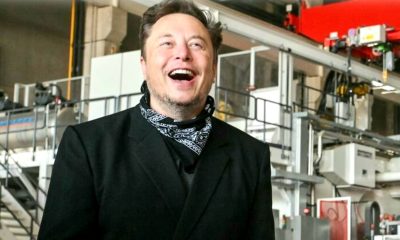
 Elon Musk1 day ago
Elon Musk1 day agoElon Musk was right all along about Tesla’s rivals and EV subsidies
-
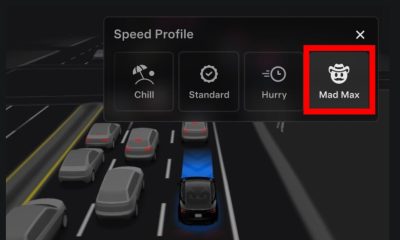
 News2 days ago
News2 days agoTesla launches ‘Mad Max’ Full Self-Driving Speed Profile, its fastest yet
-

 News2 days ago
News2 days agoTesla launches new interior option for Model Y
-
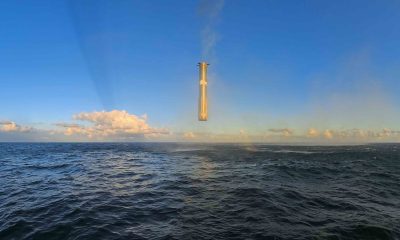
 Elon Musk6 hours ago
Elon Musk6 hours agoSpaceX posts Starship booster feat that’s so nutty, it doesn’t even look real
-
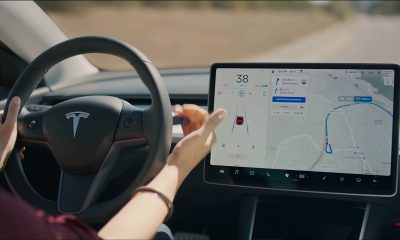
 News1 day ago
News1 day agoTesla widens rollout of new Full Self-Driving suite to more owners
-
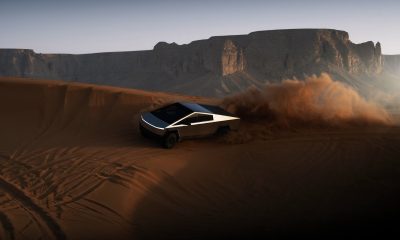
 News2 days ago
News2 days agoTesla makes big move with its Insurance program
-
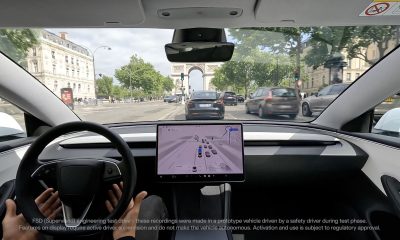
 News2 days ago
News2 days agoTesla just teased something crazy with the next Full Self-Driving update
-

 News2 days ago
News2 days agoTesla reportedly places large order for robot parts, hinting that Optimus V3 design is all but finalized


